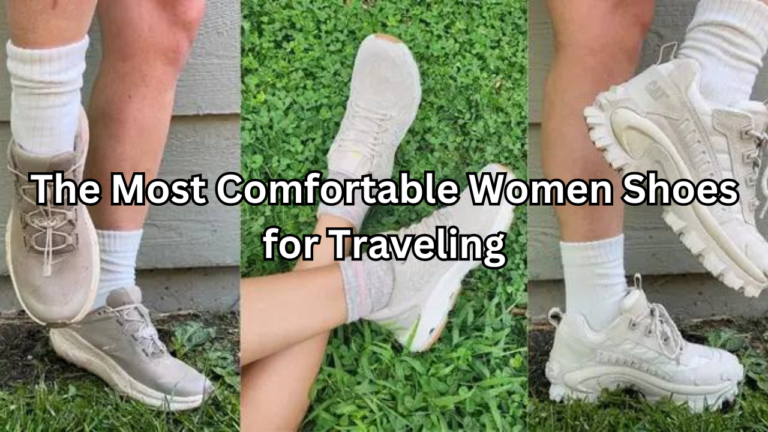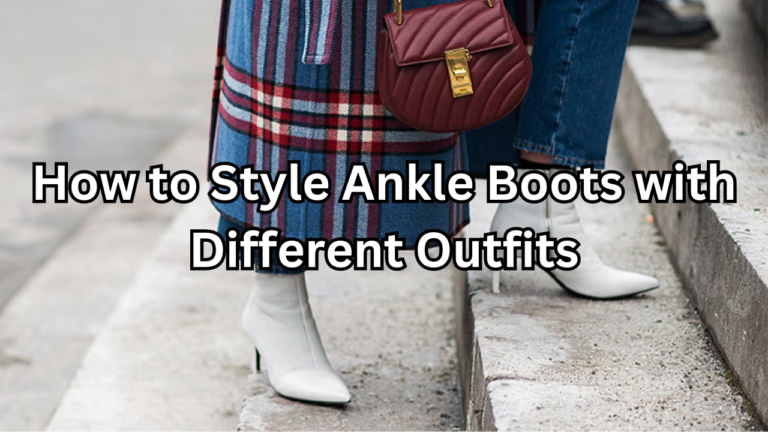

Table of Contents
Introduction
Running is a popular and accessible form of exercise that offers numerous physical and mental benefits. However, the key to an enjoyable and injury-free running experience starts with the right gear. Among the various elements of running gear, choosing the perfect running shoes is perhaps the most critical. The right pair of shoes can enhance your performance, provide essential support, and prevent injuries, while the wrong pair can lead to discomfort and potential problems.
Importance of Choosing the Perfect Running Shoes
Selecting the right running shoes is crucial for several reasons. First and foremost, the correct shoes provide the necessary support and cushioning, which can help prevent common running injuries such as shin splints, plantar fasciitis, and runner’s knee. Proper footwear also ensures that your feet are well-aligned, reducing the risk of strain on your joints and muscles.
Additionally, the right running shoes can improve your overall running experience. They offer better comfort and stability, allowing you to focus on your performance rather than dealing with blisters or discomfort. Investing in high-quality running shoes tailored to your specific needs can make a significant difference in your running routine, enhancing both your enjoyment and effectiveness.
Brief Overview of What the Article Will Cover
In this article, we will guide you through the essential aspects of choosing the perfect running shoes for women. We’ll start by helping you understand your foot type and running style, as these factors are pivotal in selecting the right footwear. Next, we’ll explore the key features to look for in running shoes, such as cushioning, support, and flexibility. We’ll also provide tips on finding the right fit and discuss the importance of replacing your shoes regularly to maintain optimal performance and comfort. By the end of this guide, you’ll have the knowledge needed to make an informed decision and find the ideal running shoes to support your fitness journey.
Understand Your Foot Type
Understanding your foot type is a fundamental step in selecting the perfect running shoes. Your foot type, specifically your arch type, influences how your foot interacts with the ground and how much support and cushioning you need. Here’s a breakdown of the different types of foot arches and how you can determine your foot type.
Different Types of Foot Arches
- High Arches: If you have high arches, your feet have a pronounced curve along the inner edge. This type of arch tends to absorb shock less effectively, which can lead to increased impact on the joints. Runners with high arches often benefit from extra cushioning to help absorb shock and provide comfort.
- Medium Arches: Medium arches, or normal arches, are the most common type. They provide a balanced distribution of weight and generally offer good shock absorption. If you have medium arches, you can usually opt for shoes with moderate cushioning and support.
- Low Arches (Flat Feet): Flat feet or low arches have little to no visible curve along the inner edge. This type of arch can lead to overpronation, where the foot rolls inward excessively. Runners with low arches typically need stability or motion-control shoes that offer additional support to manage this inward motion and prevent injuries.
How to Determine Your Foot Type
Wet Test: One simple method to determine your foot type is the wet test. Follow these steps:
Wet the sole of your foot with water.
Step onto a piece of paper or a surface where your footprint will be clearly visible.
Examine the footprint.
High Arch: If you see a thin line or a very narrow footprint with a small or no curve in the middle, you likely have high arches.
Medium Arch: A footprint with a moderate curve along the inner edge indicates medium arches.
Low Arch/Flat Feet: If the entire sole of your foot is visible with little to no curve along the inner edge, you probably have low arches.
Visiting a Podiatrist: For a more precise assessment, consider visiting a podiatrist or a specialized running store that offers gait analysis. A podiatrist can evaluate your foot structure and gait, providing detailed insights into your foot type and recommending the best type of footwear for your needs. Gait analysis often includes observing how your feet move while running or walking, which helps in selecting shoes that cater to your specific motion patterns.
By understanding your foot type, you can choose running shoes that provide the appropriate support and cushioning, enhancing your comfort and performance while reducing the risk of injury.
Know Your Running Style
Fashion plays an important role when selecting the right running shoes, but understanding your running style is equally crucial. Your running style, specifically your gait, can significantly impact the type of shoe that not only looks stylish but also provides the best support during your runs. There are three primary running styles based on how your foot strikes the ground: pronation, supination, and neutral, and finding a shoe that blends both fashion and function can enhance your overall experience.
Various Running Styles
- Pronation: Pronation refers to the inward roll of the foot after it strikes the ground. Some degree of pronation is normal and helps with shock absorption. However, overpronation occurs when the foot rolls inward excessively, which can lead to injuries such as shin splints or knee pain. Runners who overpronate typically need stability or motion-control shoes that offer added support to correct this inward motion.
- Supination (Underpronation): Supination is the opposite of pronation, where the foot rolls outward upon impact. This style often occurs in runners with high arches, and it reduces the foot’s ability to absorb shock effectively. Runners who supinate should look for shoes with extra cushioning and flexibility to help distribute impact forces more evenly.
- Neutral: A neutral running style means that the foot rolls inward slightly to absorb shock, but it stays aligned without excessive motion in either direction. Runners with a neutral gait can typically wear a wide variety of running shoes, with a focus on finding a comfortable pair with good cushioning.
How Running Style Affects Shoe Choice
Your running style dictates the type of support and cushioning you need in your shoes. For example:
- Overpronators should prioritize shoes with medial support, often found in stability or motion-control shoes, to prevent excessive inward rolling.
- Supinators will benefit from shoes with ample cushioning, particularly in the midsole, to help absorb the impact of each stride.
- Neutral runners can opt for shoes with balanced cushioning and moderate support, offering comfort and stability without needing specialized correction.
Understanding your running style and selecting shoes that cater to your gait can help prevent injuries, enhance comfort, and improve overall running efficiency.
Consider the Type of Running You Do
The type of running you engage in—whether on roads, trails, or tracks—also plays a significant role in determining the best shoe for you. Additionally, whether you’re focused on short-distance sprints or long-distance endurance runs will influence the specific features you should look for in running shoes.
Road Running vs. Trail Running
- Road Running: If you primarily run on roads, pavements, or treadmills, you’ll need shoes that offer cushioning and shock absorption to protect your joints from the repetitive impact of hard surfaces. Road running shoes are typically lightweight, with smooth outsoles designed for even terrain. Flexibility and breathability are also important, as they contribute to comfort during long runs.
- Trail Running: For those who prefer running on trails, uneven terrain, and rugged paths, trail running shoes are essential. These shoes are designed with durable outsoles featuring deep treads for better grip and stability on rocky, muddy, or slippery surfaces. They often have reinforced uppers to protect your feet from debris, and they provide additional support to prevent ankle twists and other injuries common in off-road running.
Short-Distance vs. Long-Distance Running
- Short-Distance Running: If your focus is on short, fast runs or sprints, you’ll benefit from shoes that are lightweight and responsive. These shoes typically have less cushioning to allow for quicker, more agile movements, helping you achieve faster times.
- Long-Distance Running: For long-distance runs, comfort and durability are paramount. Look for shoes with ample cushioning to absorb the repeated impact over many miles, and consider those with a more supportive structure to maintain stability as your body tires. Breathability and moisture-wicking properties are also important to keep your feet comfortable during extended periods of activity.
How Each Type Impacts Shoe Features
- Cushioning: Long-distance runners will need more cushioning than short-distance runners to protect against the prolonged impact.
- Durability: Trail runners need shoes with tougher materials and reinforced construction, while road runners can focus more on lightweight options.
- Support: Depending on your running style and the terrain, the level of support you need will vary. Overpronators and trail runners generally require more support than neutral or short-distance runners.
By considering your running style and the type of running you do, you can select shoes that enhance your performance and keep you comfortable, no matter the distance or terrain.
Here’s a draft for the sections on fit and comfort, shoe features to look for, and testing and trying shoes:
Fit and Comfort
When it comes to running shoes, fit and comfort are paramount. A proper fit not only enhances your performance but also helps prevent injuries, blisters, and discomfort during your runs. Here’s what you need to know about ensuring the right fit and comfort.
Importance of Proper Fit
- Length: Your running shoes should have enough room in the toe box to allow your toes to move comfortably, but not so much space that your foot slides around. Aim for about a thumbnail’s width of space between your longest toe and the end of the shoe. This extra space accounts for foot expansion during running, which is particularly important on longer runs.
- Width: The width of the shoe should snugly fit the width of your foot without being too tight or too loose. A shoe that’s too narrow can cause blisters and restrict blood flow, while a shoe that’s too wide can lead to instability. Ensure that the sides of your feet feel secure but not squeezed.
- Toe Box: The toe box is the front part of the shoe where your toes sit. A spacious toe box allows your toes to splay naturally, which is especially important for runners with wider feet or those prone to blisters and black toenails. If you feel any pinching or crowding in the toe area, consider trying a different size or style.
How to Try on Running Shoes
- Socks: When trying on running shoes, wear the same type of socks you plan to use while running. This ensures an accurate fit and helps you assess the shoe’s comfort and feel during your runs.
- Time of Day: Feet tend to swell throughout the day, especially after physical activity. Try on running shoes in the afternoon or evening, when your feet are at their largest. This helps you avoid shoes that might feel too tight after a long run.
Checking for Comfort
- Cushioning: Pay attention to the level of cushioning the shoes provide. It should feel comfortable underfoot without being too soft or too firm. The cushioning should absorb shock and provide support, especially if you’re running on hard surfaces like concrete.
- Breathability: Breathability is essential for keeping your feet cool and dry during runs. Check if the shoe’s upper material allows air to circulate, reducing the risk of overheating and moisture buildup, which can lead to blisters.
Shoe Features to Look For
When choosing running shoes, it’s important to consider key features that align with your needs and running style. Here are the main features to look for:
Cushioning
- Types and Benefits: Running shoes come with various types of cushioning, including foam, gel, and air-based systems. The type of cushioning you choose should align with your running style and the type of surface you run on. For example, more cushioning is beneficial for long-distance runners or those who frequently run on hard surfaces, while minimal cushioning might be preferred by runners who want to feel more connected to the ground.
Support
- Arch Support: Depending on your foot type, arch support is crucial for maintaining proper alignment and preventing overpronation or supination. Look for shoes that provide adequate support for your specific arch type, whether it’s high, medium, or low.
- Stability Features: Stability shoes offer added support for runners who overpronate. They often feature firmer materials on the inner side of the shoe, helping to correct the inward roll of the foot and providing a more stable ride.
Flexibility and Traction
- Flexibility: A flexible shoe allows your foot to move naturally through its stride. Check the shoe’s flexibility by bending it at the forefoot. It should bend easily but not feel flimsy. Rigid shoes can hinder natural movement, leading to discomfort and potential injury.
- Traction: Traction is vital for maintaining grip and stability, especially if you run on varied terrains. Look for shoes with durable outsoles and tread patterns designed to provide traction on the surfaces you run on, whether it’s road, trail, or track.
Testing and Trying Shoes
Before committing to a new pair of running shoes, it’s essential to test them out properly to ensure they meet your needs.
How to Test Shoes for Performance
- Running on a Treadmill: Many running stores have treadmills available for customers to test shoes. Running on a treadmill simulates real running conditions and helps you gauge how the shoes perform in terms of comfort, support, and cushioning. Pay attention to how your feet feel during the run and if the shoes support your natural stride.
- Walking In-Store: If running isn’t an option, take a walk around the store. Focus on how the shoes feel during each step. Are they comfortable? Do they provide enough support? Does your heel slip, or does the shoe fit snugly? Walking can reveal potential issues with fit or comfort that might not be apparent when standing still.
Signs of a Good Fit vs. a Bad Fit
- Good Fit: A good fit feels secure yet comfortable. Your heel should stay in place without slipping, and your toes should have enough room to move but not so much that they slide forward with each step. There should be no pinching, squeezing, or excessive pressure on any part of your foot.
- Bad Fit: A bad fit might feel too tight or too loose. Signs include excessive pressure on the toes, pinching around the sides, or heel slippage. If the shoes feel uncomfortable or cause any pain, they’re likely not the right fit for you.
By taking the time to test and try on running shoes properly, you can ensure that you’re choosing a pair that will support your running goals and keep you comfortable throughout your runs.
Brand and Model Recommendations
Choosing the right brand and model is crucial when selecting running shoes. Some brands are known for their quality, durability, and innovation in running footwear. Here are some popular brands and recommended models that cater to different running needs.
Popular Brands Known for Quality Running Shoes
- Nike: Renowned for their advanced technology and stylish designs, Nike offers a wide range of running shoes suitable for all types of runners. Their shoes often feature innovative cushioning systems like Zoom Air and React foam, which provide a responsive and comfortable ride.
- Adidas: Adidas is another leading brand that combines performance and style. Their Boost technology is particularly popular for providing excellent energy return, making their shoes ideal for both long-distance and short-distance running.
- Asics: Asics is a go-to brand for runners seeking reliable support and comfort. Their Gel series is famous for its superior cushioning and shock absorption, catering well to overpronators and those requiring additional support.
- Brooks: Brooks specializes in running shoes and is well-loved for its focus on comfort and stability. Their shoes, such as the Brooks Ghost and Brooks Adrenaline, are highly recommended for runners with varying needs, from neutral to overpronation support.
- Saucony: Known for its comfortable and well-cushioned shoes, Saucony offers models that are great for long-distance runners. The Saucony Kinvara and Saucony Triumph are popular choices for their lightweight yet supportive designs.
Recommended Models for Different Needs
- For Overpronators: The Asics Gel-Kayano and Brooks Adrenaline GTS are excellent choices, offering stability features that help correct overpronation while providing ample cushioning for comfort.
- For Neutral Runners: The Nike Air Zoom Pegasus and Adidas Ultraboost are popular among neutral runners. These models provide balanced cushioning and support, making them versatile for various running distances.
- For Long-Distance Running: The Brooks Ghost and Saucony Triumph are ideal for long-distance runners who need extra cushioning and support to handle the impact of extended runs.
- For Trail Running: The Salomon Speedcross and Altra Lone Peak are recommended for trail runners. These shoes offer excellent grip, durability, and protection for rough terrains.
Price vs. Quality
When it comes to running shoes, understanding the relationship between price and quality is essential. Investing in a good pair of running shoes can make a significant difference in your comfort, performance, and injury prevention.
Understanding the Price Range of Running Shoes
Running shoes can range in price from around $50 to $200 or more. The price often reflects the materials used, the level of technology incorporated, and the brand reputation. For example:
- Budget-Friendly Options: Shoes in the $50-$100 range may offer basic features and are generally suitable for casual or beginner runners. However, they may lack advanced cushioning or stability features found in higher-end models.
- Mid-Range Options: Shoes priced between $100-$150 typically offer a good balance of comfort, durability, and performance features. This range is popular among regular runners who need reliable shoes without breaking the bank.
- Premium Options: Shoes priced above $150 often include the latest technology, superior materials, and enhanced durability. These are ideal for serious runners who log high mileage or have specific support needs.
Balancing Cost with Quality and Features
While it can be tempting to choose the cheapest option, it’s important to consider the long-term benefits of investing in a higher-quality shoe. A well-made shoe that suits your running style and needs can prevent injuries, improve comfort, and ultimately last longer, providing better value for your money. Consider the following when balancing cost with quality:
- Frequency of Use: If you run frequently or cover long distances, investing in a higher-quality shoe is likely worth the cost due to the added durability and support.
- Specific Needs: If you have specific foot issues or require particular features like extra arch support or motion control, it’s advisable to prioritize quality over cost.
- Sales and Discounts: Keep an eye out for sales or discounts on last season’s models. These can offer substantial savings without compromising on quality.
Maintaining Your Running Shoes
Proper care and maintenance of your running shoes can extend their lifespan and keep them performing at their best. Here are some tips to help you get the most out of your investment.
Tips for Prolonging the Life of Your Shoes
- Rotate Your Shoes: If you run regularly, consider rotating between two pairs of running shoes. This allows each pair to recover and dry out between runs, reducing wear and tear.
- Air Them Out: After each run, remove the insoles and let your shoes air out to prevent moisture buildup, which can lead to odors and degrade the materials.
- Clean Them Regularly: Gently clean your shoes with a soft brush and mild soap to remove dirt and debris. Avoid using harsh chemicals or machine washing, as these can damage the shoes.
- Store Them Properly: Store your shoes in a cool, dry place away from direct sunlight or heat sources, which can cause the materials to break down prematurely.
When to Replace Your Running Shoes
Even with proper care, running shoes have a finite lifespan. Continuing to run in worn-out shoes can lead to discomfort and increase the risk of injury. Here are signs that it’s time to replace your running shoes:
- Mileage: Most running shoes should be replaced after 300-500 miles of use. Keep track of your mileage to know when it’s time for a new pair.
- Visible Wear: If the outsole (the bottom part of the shoe) is worn down or the midsole is compressed and no longer providing cushioning, it’s time for a replacement.
- Decreased Comfort: If you start to experience new aches, pains, or blisters during your runs, your shoes may no longer be providing the necessary support and cushioning.
- Loss of Traction: If your shoes no longer grip the ground well, especially on wet or uneven surfaces, it’s a clear sign they need replacing.
By following these guidelines, you can make informed decisions when purchasing, maintaining, and eventually replacing your running shoes, ensuring you get the most out of every run.
Conclusion
Choosing the perfect running shoes for women is more than just a matter of style—it’s about finding the right balance of comfort, support, and performance tailored to your unique needs. Understanding your foot type, knowing your running style, and considering the specific demands of your running routine are crucial steps in this process. Additionally, ensuring a proper fit and paying attention to essential shoe features like cushioning, support, and flexibility can significantly enhance your running experience.
Investing time and effort into selecting the right running shoes is well worth it. The right pair can help you run more comfortably, reduce the risk of injury, and even improve your overall performance. So, don’t rush the process—take the time to explore different brands and models, try on various options, and test them out until you find the pair that feels just right for you. Your feet—and your running—will thank you for it.





